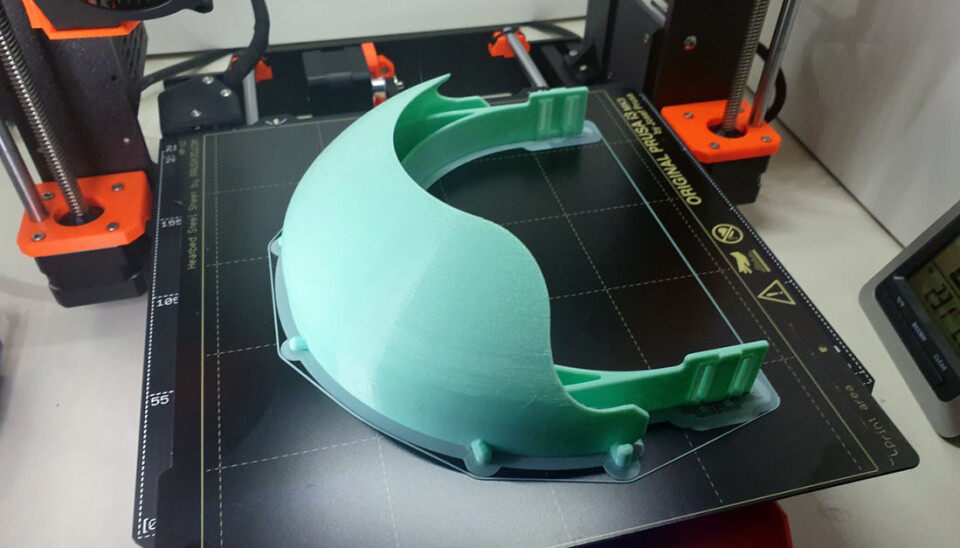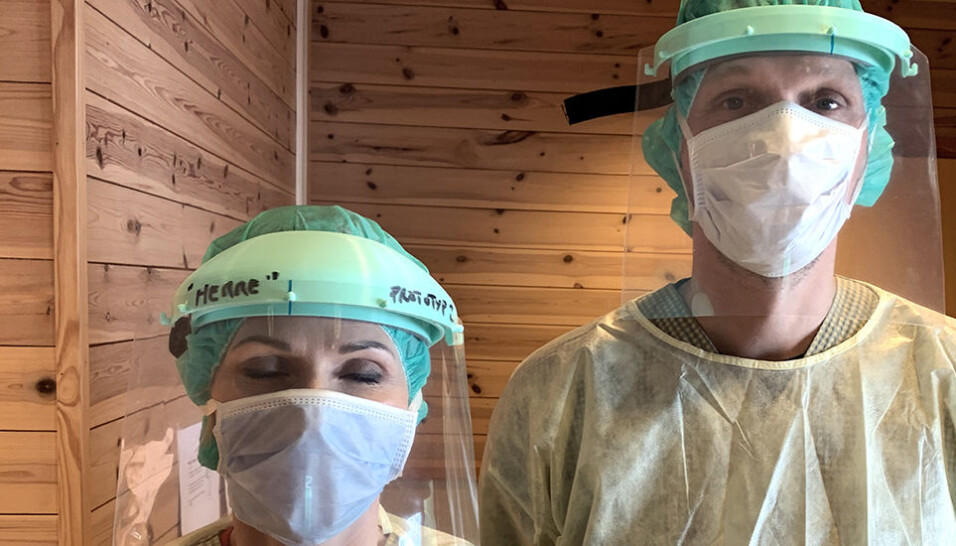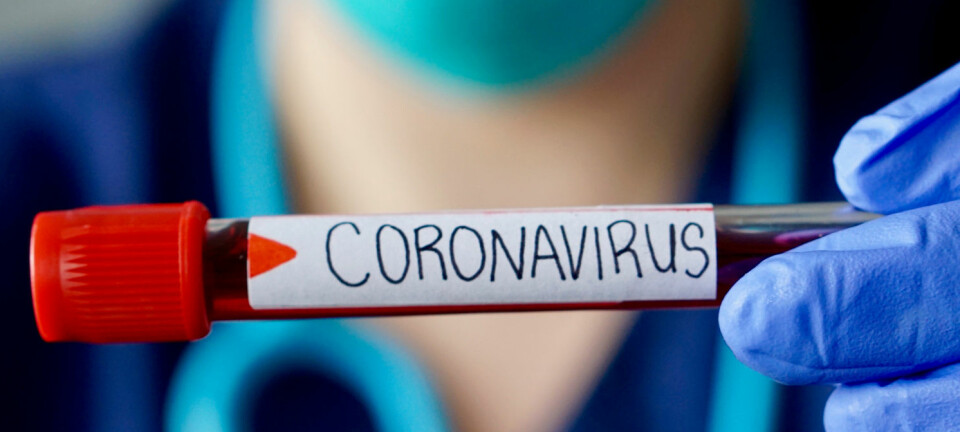This article is produced and financed by NTNU Norwegian University of Science and Technology - read more

3D printing team improves personal protection equipment for hospitals
NTNU in Gjøvik has developed a better design for face shields, which are part of the personal protection equipment used by medical professionals in the corona pandemic. Major production of the new shields – up to 250 per day – is taking place on the university’s 3D printers.
The project started at the end of March.
NTNU laboratory manager Tor Erik Nicolaisen and student Bjørn-Magnus Kristiansen came across a Facebook group for people interested in 3D printing. Recipes were posted on how to produce face shields.
The two researchers recognized that NTNU could fill a need here. The university has both the expertise and the equipment to mass produce face shields. A group of students and staff went to work on the project.
A few days later, 45 3D printers started producing the shields. The research team expects to be able to deliver 200-250 shields a day to hospitals that need them.

New improved design
The Facebook-group page had posted various suggestions and models of face shields for printing. The NTNU researchers chose the model they thought was best as their starting point.
They produced this model and had it tested at the Gjøvik municipality’s test station and the technical department of Innlandet Hospital. Then they incorporated design improvements based on the feedback they received.
“The original models don’t give you the ability to tighten the strap behind the head without removing the shield. That’s not a good feature, so we created a model that has a stretchy elastic band that can be easily tightened,” says Kristiansen. He is a product development student in NTNU’s Department of Manufacturing and Civil Engineering and is one of several students who have contributed to this volunteer effort.
“We also received feedback that there was a need for better coverage on the sides to increase safety for the wearer. In addition, the brim had an opening at the top that we closed in the redesign,” he said.
More comfortable
“The shield is more comfortable now too,” said Nicolaisen at the same department in Gjøvik.
“The standard face shield isn’t intended to be worn for hours at a time. We saw pictures of health professionals who had worn their shields for a whole day. They had open wounds on their foreheads. So in our new design we added foam rubber to the forehead area,” says Nicolaisen, who adds that they are not accepting payment for the work or the simplest models.
The brim of the shield is made on a 3D printer. Polycarbonate is used to make the transparent “glass” of the visor itself, which is laser cut by Kjell Are Refsvik in NTNU’s Department of Design.
The team also made some changes to the new version that make it faster to produce.
The NTNU team is sharing their printing recipe and process description plus a materials list with the Facebook group. The process is designed so that it is possible to produce simpler versions with laminating film, hole machines and elastic resin.
Interesting process in hindsight
From idea to finished product, the process took 3-4 days.
“We would have to call this process concurrent engineering,” says Nicolaisen. He praised the students who sat in their own rooms and developed the design, from drafting and process description to printable solution.
Nicolaisen says that communicating about the development occurred using Microsoft Teams. Although this information may seem overly detailed to mention here, NTNU interaction designers are saying that they would like to use Teams dialoguing as a teaching tool again – as an example of how a design process can happen in such a short time.a

































